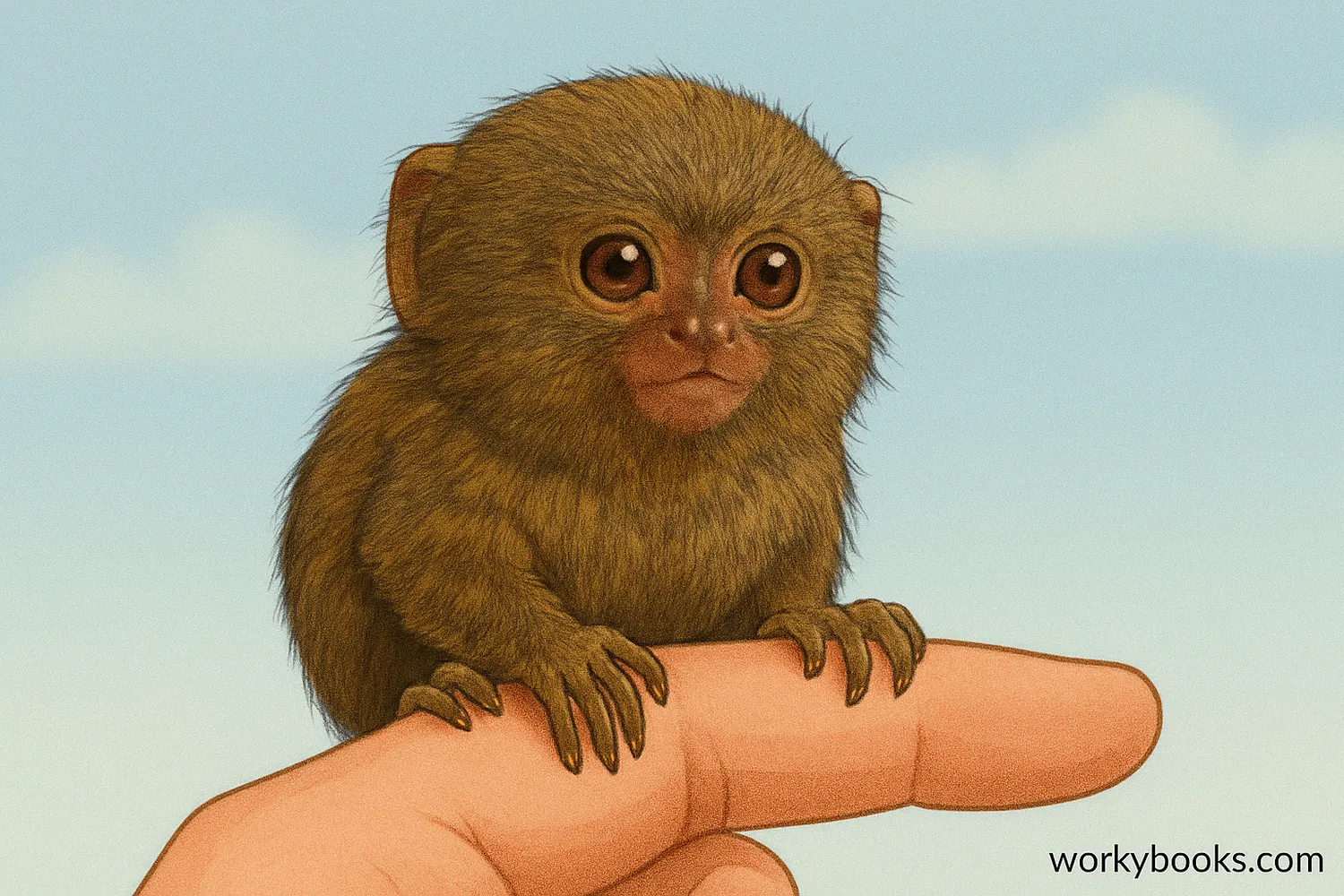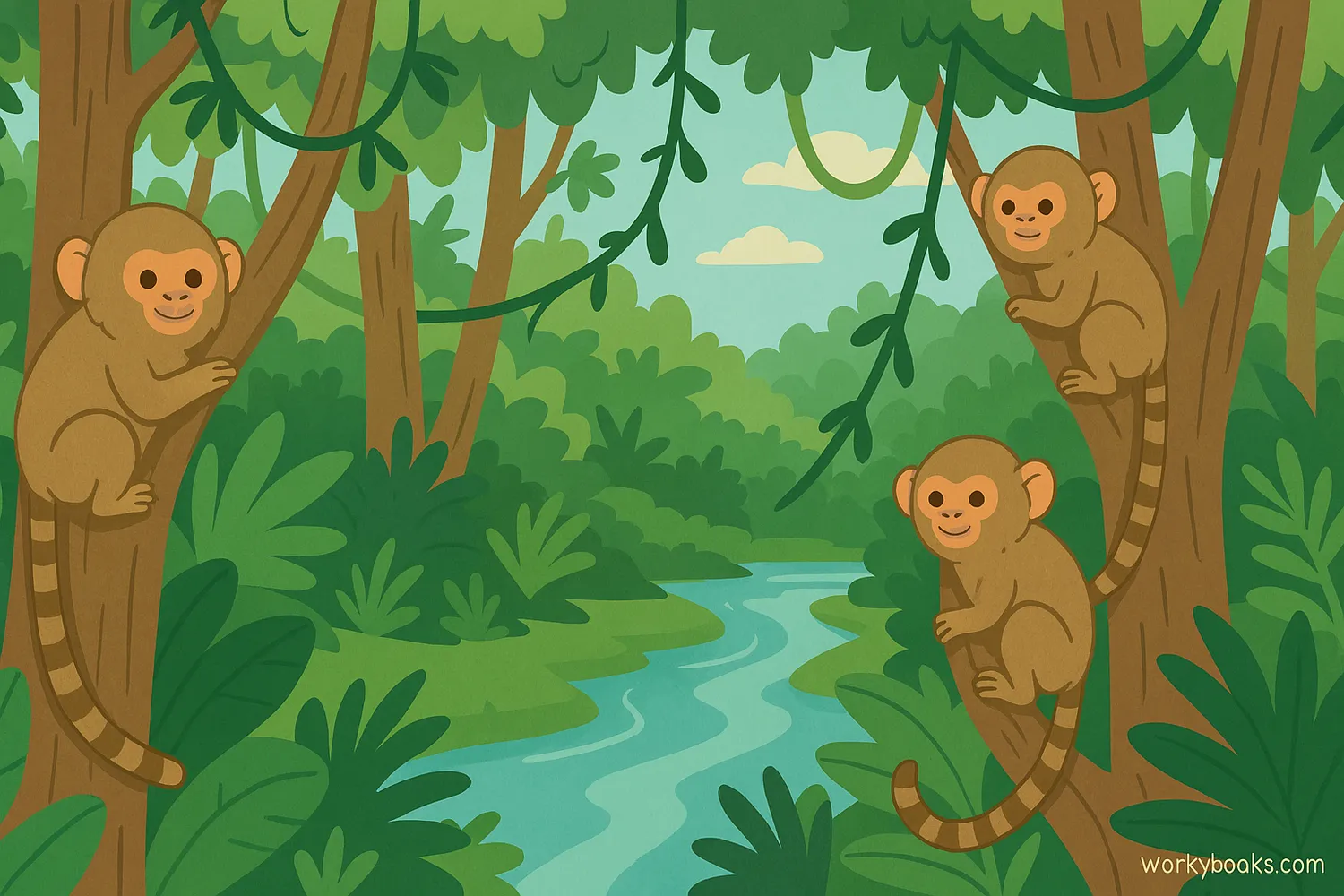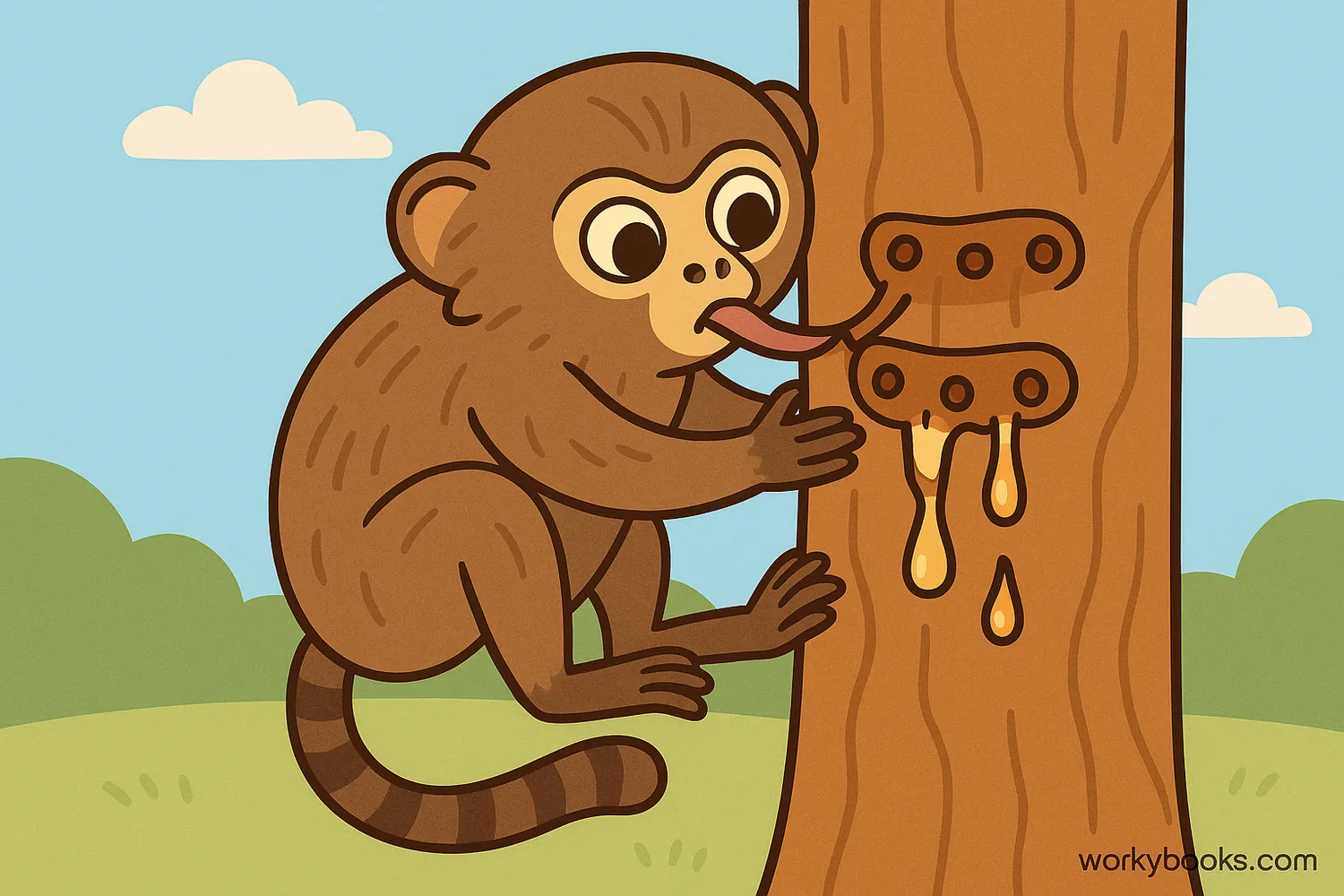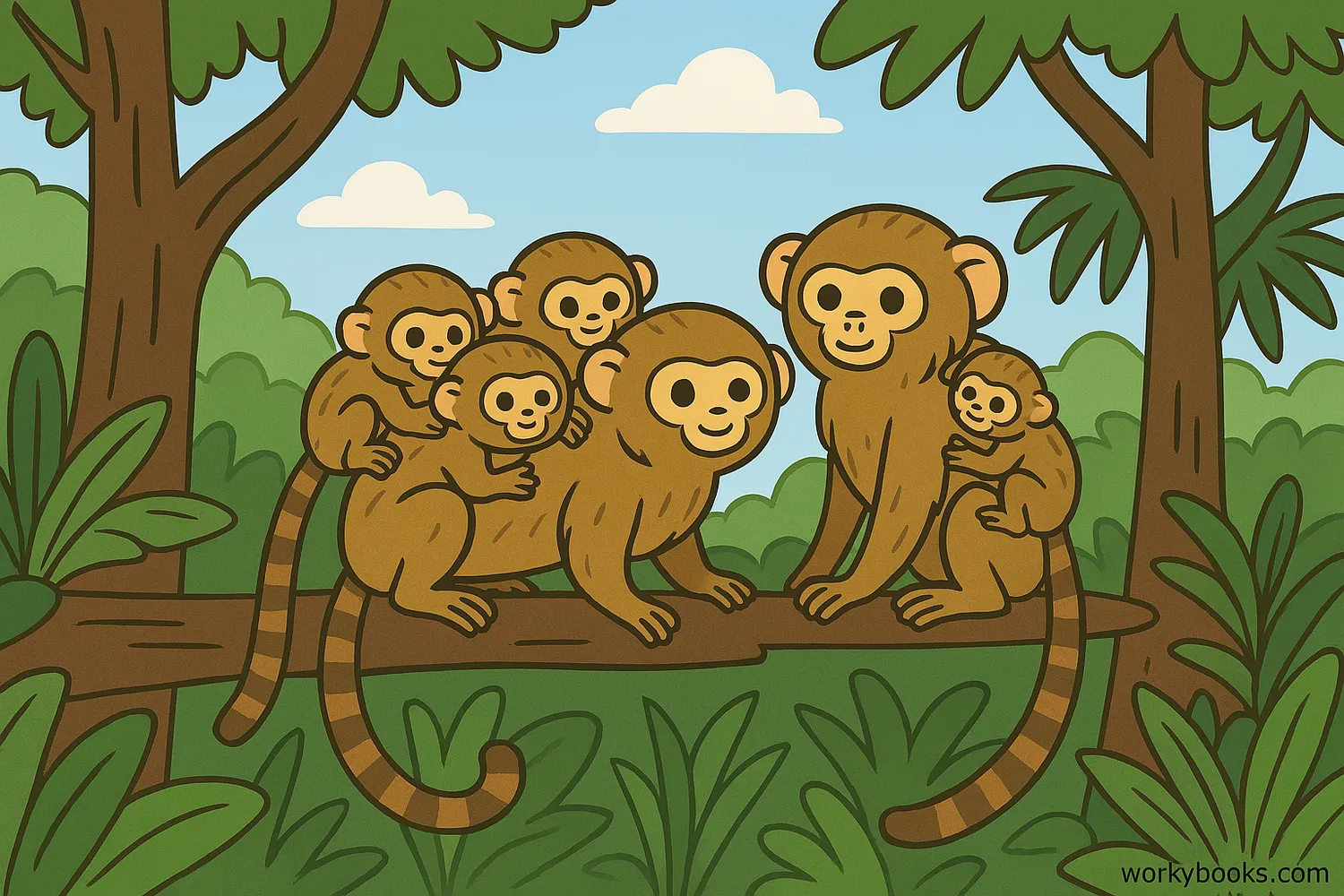Pygmy Marmoset - Definition, Examples, Quiz, FAQ, Trivia
Discover the world's smallest monkey species from the Amazon rainforest
What is a Pygmy Marmoset?

The pygmy marmoset is the smallest monkey in the world! These tiny primates weigh only about 100 grams (3.5 ounces) when fully grown – that's about the weight of a large egg. They measure just 12-15 cm (5-6 inches) in length, with a tail that's longer than their body.
Pygmy marmosets have special adaptations for their small size. They have sharp claws that help them climb trees, and they can turn their heads 180 degrees to watch for predators. Their fur is patterned with brown, gray, and yellow to help them blend into the rainforest environment.
Size Comparison
An adult pygmy marmoset is small enough to fit in the palm of your hand! They're about the size of a chipmunk but with a much longer tail.
Habitat and Home

Pygmy marmosets are native to the Amazon rainforest in South America. They live in countries including Brazil, Colombia, Ecuador, Peru, and Bolivia. These tiny monkeys are arboreal, which means they spend their entire lives in trees.
They prefer living in flooded forests near rivers where there are plenty of trees for food and shelter. Pygmy marmosets rarely come down to the forest floor because they would be easy targets for predators there.
Rainforest Canopy
Live high in the trees of the Amazon rainforest
Near Water
Prefer areas near rivers and flooded forests
Tree Holes
Sleep in tree holes for protection at night
South America
Found in several countries across the Amazon basin
Habitat Protection
Pygmy marmoset habitats are threatened by deforestation. Protecting the Amazon rainforest helps ensure these tiny monkeys have a home.
Diet and Feeding

Pygmy marmosets have a very specialized diet. Their favorite food is tree sap or gum! They use their sharp teeth to gnaw holes in tree bark, then return to these holes later to feed on the sap that oozes out.
In addition to tree sap, pygmy marmosets also eat:
• Insects like grasshoppers and butterflies
• Spiders they find in the trees
• Fruit when it's available
• Small lizards and frogs occasionally
They need to eat frequently throughout the day because of their high metabolism and small size.
Specialized Teeth
Pygmy marmosets have special lower teeth that are longer than their incisors, which helps them gouge holes in tree bark to get to the sap.
Behavior and Family

Pygmy marmosets are social animals that live in family groups of 2-9 members. These groups usually consist of a breeding pair and their offspring of different ages. The family works together to find food, watch for predators, and care for the young.
Communication is important for these small primates. They use various sounds including:
• Trills to communicate over long distances
• J-calls to keep track of family members
• Alarm calls to warn of predators
• Clicking sounds when feeding
Family Groups
Live in small family units that work together
Baby Care
All family members help care for the young
Communication
Use different vocalizations to communicate
Twins Are Common
Pygmy marmoset mothers usually give birth to twins twice a year. The father and older siblings help carry and care for the babies.
Pygmy Marmoset Knowledge Quiz
Test your knowledge about pygmy marmosets with this quiz! Answer all 5 questions to see how much you've learned.
Frequently Asked Questions
Here are answers to some common questions about pygmy marmosets:
Fun Pygmy Marmoset Trivia
Discover some amazing facts about pygmy marmosets!
Tiny Size
Newborn pygmy marmosets are only about the size of a human thumb! They weigh just 15 grams (0.5 ounces) at birth.
Amazing Jumpers
Despite their small size, pygmy marmosets can jump up to 5 meters (16 feet) between trees! That's like a human jumping over a school bus.
Complex Communication
Pygmy marmosets have different calls for different predators. They make one sound for aerial threats (like birds) and another for ground threats (like snakes).
Family Helpers
Older siblings help care for newborn marmosets. They carry the babies on their backs and only return them to the mother for feeding.


